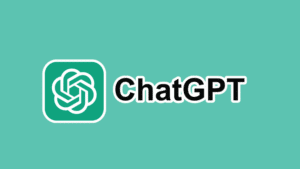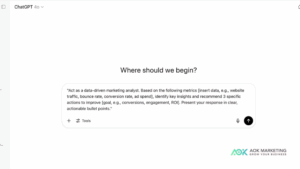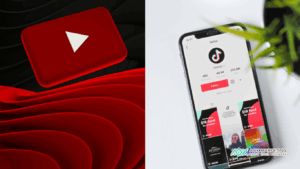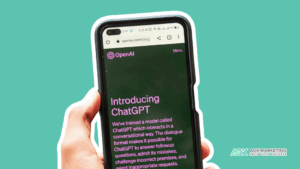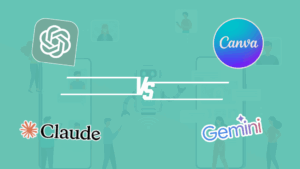The way marketers create content, analyze data, and brainstorm ideas has been transformed by artificial intelligence. Among the AI tools making waves, ChatGPT stands out as one of the most powerful and accessible assistants available today. But here’s the catch: ChatGPT is only as good as the prompts you give it.
If you want to unlock its full potential and boost your campaigns, you need to learn how to craft prompts that deliver strategic, creative, and actionable results. In this article, we’ll show you three ChatGPT prompts that will change your marketing game, along with tips on how to use them effectively.
Why Your Marketing Needs Better Prompts
Marketers juggle many tasks: writing copy, designing campaigns, analyzing customer behavior, and coming up with fresh ideas. With ChatGPT, you can speed up these processes — but only if you know what to ask.
A vague prompt like “write a blog post” might get you something generic. But a well-designed prompt can help you generate:
-
Creative ad copy that resonates with your audience
-
Engaging social media content tailored to your brand voice
-
Sharp campaign strategies backed by data-driven insights
Ready to level up? Here are three game-changing ChatGPT prompts every marketer should master.
Prompt #1: Generate Customer-Centric Messaging That Converts
Why It Works
One of the hardest things in marketing is writing copy that speaks directly to your audience’s needs, pain points, and desires. This prompt helps you craft messaging that connects emotionally and drives action — whether it’s for ads, landing pages, or emails.
The Prompt:
“Act as a seasoned marketing copywriter. Write [type of content, e.g., a Facebook ad, email subject line, landing page headline] for [product/service] targeted at [specific audience or persona]. Focus on [desired emotional trigger, e.g., fear of missing out, aspiration, trust] and include a clear call-to-action. Keep it under [word count] words.”
Example in Action:
“Act as a seasoned marketing copywriter. Write a Facebook ad for an eco-friendly water bottle targeted at health-conscious millennials. Focus on aspiration and include a clear call-to-action. Keep it under 50 words.”
Output Example:
“Stay hydrated, save the planet. Our sleek, reusable water bottle keeps your drinks cool and your conscience clear. Grab yours today!”
When to Use:
-
Crafting social media ads
-
Writing subject lines for emails
-
Developing website copy
With this prompt, you eliminate guesswork and generate copy that aligns with your brand voice and speaks directly to your audience.
Prompt #2: Brainstorm Campaign Ideas for Any Goal
Why It Works
When you’re under pressure to deliver creative campaigns but feel stuck, this prompt can spark ideas tailored to your business objectives and audience.
The Prompt:
“Act as a creative marketing strategist. Brainstorm [number] unique and effective campaign ideas for [goal, e.g., increasing brand awareness, driving sales, growing social followers] for [brand/product/service]. Target [specific audience] and consider [specific channel, budget constraints, or seasonality if applicable]. Present the ideas in a numbered list with a short explanation for each.”
Example in Action:
“Act as a creative marketing strategist. Brainstorm 5 unique and effective campaign ideas for increasing brand awareness for a sustainable fashion brand. Target Gen Z on Instagram and consider a modest budget.”
Output Example:
-
#OOTD Challenge — Encourage followers to share their eco-friendly outfits using a branded hashtag for a chance to win a sustainable wardrobe upgrade.
-
Behind-the-Scenes Reels — Show your ethical production process in a fun, relatable way through short videos.
-
Limited Edition Drops — Create hype with small-batch collections available only to followers.
-
Influencer Swap — Partner with micro-influencers who share their sustainable swaps and tag your brand.
-
Educational Carousels — Share bite-sized facts about fast fashion’s impact and how your brand is making a difference.
When to Use:
-
Planning quarterly campaigns
-
Preparing pitch decks
-
Ideating seasonal promotions
Instead of recycling old ideas, this prompt delivers fresh concepts you can execute right away.
Prompt #3: Analyze Data and Suggest Next Steps
Why It Works
Analyzing data and deciding what to do next can be overwhelming — especially when you have metrics coming in from multiple channels. This prompt helps you interpret data and turn it into actionable insights.
The Prompt:
“Act as a data-driven marketing analyst. Based on the following metrics [insert data, e.g., website traffic, bounce rate, conversion rate, ad spend], identify key insights and recommend 3 specific actions to improve [goal, e.g., conversions, engagement, ROI]. Present your response in clear, actionable bullet points.”
Example in Action:
“Act as a data-driven marketing analyst. Based on the following metrics — website traffic: 50,000/month, bounce rate: 70%, conversion rate: 1%, ad spend: $5,000/month — identify key insights and recommend 3 specific actions to improve conversions.”
Output Example:
-
Insight: High bounce rate suggests visitors aren’t finding what they expect. Action: Redesign landing page with clearer messaging and a stronger value proposition.
-
Insight: Low conversion rate indicates weak calls-to-action. Action: Test different CTA placements and wording to increase sign-ups.
-
Insight: Traffic is strong but untargeted. Action: Refine audience targeting in ads to attract more qualified leads.
When to Use:
-
After a campaign wraps up
-
During monthly or quarterly reviews
-
When KPIs are falling short
This prompt turns overwhelming data into clear priorities, helping you optimize faster and smarter.
Tips for Using ChatGPT Prompts Effectively
These prompts are powerful, but to get the most out of them, keep these best practices in mind:
-
Be Specific: The more details you include (about your audience, tone, goals), the better the output.
-
Iterate: If the response isn’t quite right, refine your prompt and try again.
-
Combine Insights: Use multiple prompts together to create cohesive strategies — for example, combine Prompt #2 to generate campaign ideas and Prompt #1 to craft the copy.
-
Fact-Check: While ChatGPT is helpful, always double-check facts and ensure the output aligns with your brand guidelines.
Why These Prompts Matter
Good marketing is about clarity, creativity, and action — and these prompts help you achieve all three.
-
Prompt #1 ensures your messaging resonates.
-
Prompt #2 fuels your creativity and helps you stand out.
-
Prompt #3 keeps you data-driven and focused on results.
Instead of spending hours brainstorming, testing random ideas, or getting lost in analytics, you can use these prompts to focus your efforts where they matter most.
Final Thoughts
AI doesn’t replace marketers — it enhances them. With the right prompts, you can harness ChatGPT’s capabilities to create smarter strategies, better campaigns, and more impactful results.
The next time you sit down to plan your content, analyze your data, or come up with a new campaign, try these three ChatGPT prompts that’ll change your marketing game.
They’re simple to use, endlessly adaptable, and can help you stay ahead in a fast-paced digital landscape.
About The Author
Dave Burnett
I help people make more money online.
Over the years I’ve had lots of fun working with thousands of brands and helping them distribute millions of promotional products and implement multinational rewards and incentive programs.
Now I’m helping great marketers turn their products and services into sustainable online businesses.
How can I help you?
